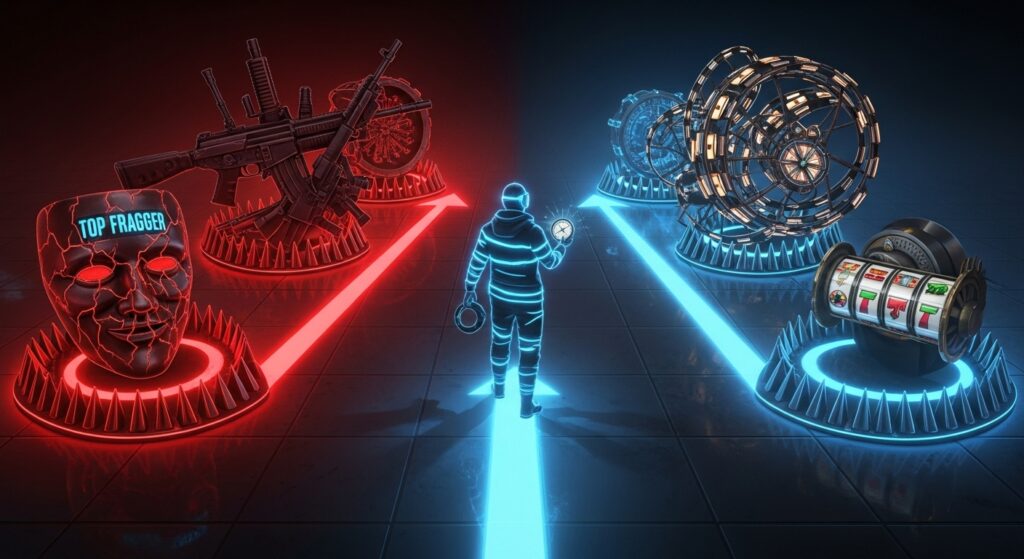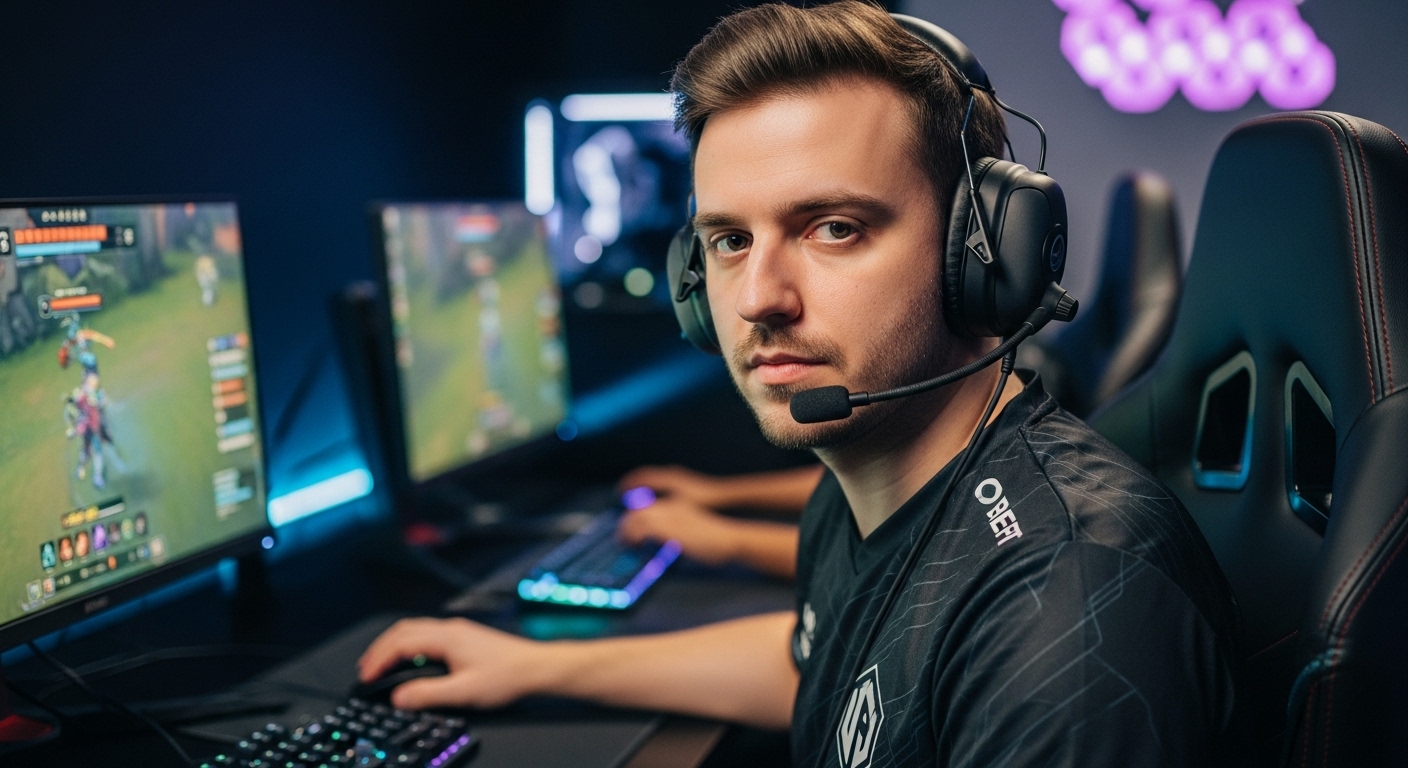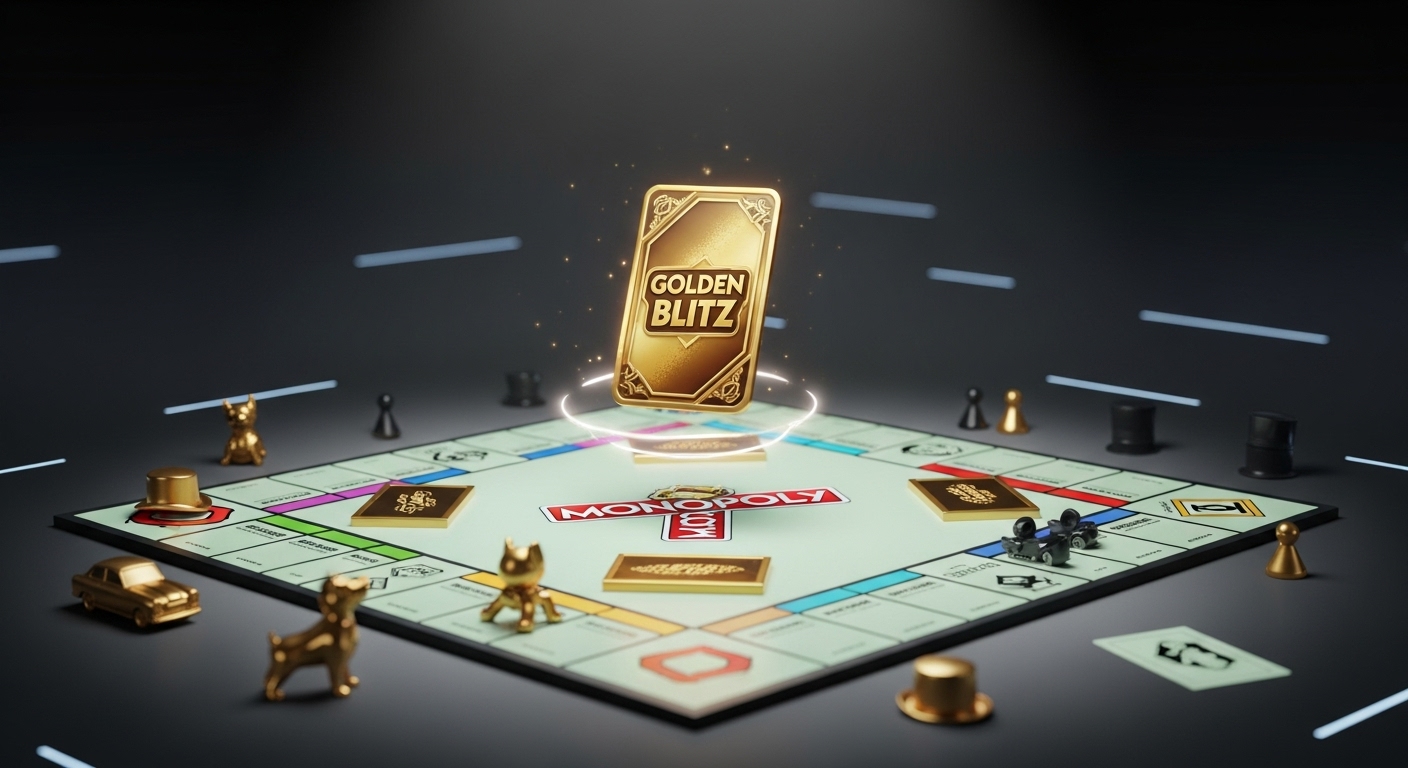If you want to rank up fast in competitive matchmaking, I’m going to be blunt: you need less drama and more boring, repeatable habits. I’ve been grinding ladders for over a decade, across shooters and MOBAs and whatever else the genre roulette lands on. In my experience, the matchmaker does not care about your feelings. It cares about your hidden MMR, your win rate, your consistency, and sometimes your last 10 games more than your last 100.
You might call it SBMM. Some call it “the ranking system,” “ELO,” “ranked ladder,” “placement matches,” or the mythical “win streak buff.” I’ve heard it all. I’ve tried most of it. Solo queue, duo queue, trio stacks, team comp wizardry. Let me cut through the noise and give you the stuff that has actually worked for me.
What the matchmaker actually pays attention to (and what it pretends to)

I’ve always found that people argue about rank like it’s astrology. “Mercury was in retrograde, so I got three instalock duelists and a DC.” Sure. But if you peel back the mystery, the system is more like a basic math problem. Most games are using some flavor of matchmaking that tries to place two teams of similar strength. Your public rank is not always the same as your hidden rating. Your hidden rating moves first. Your badge catches up later. That’s why you can feel “hard stuck” even while you’re actually gaining under the hood.
Under many hoods sits something inspired by the Elo rating system. Win, gain points. Lose, drop points. Beat a stronger team, gain more. Lose to a weaker team, lose more. Some games add bells and whistles like personal performance, K/D, ADR, damage per round, or MVPs, but the backbone is the same: the matchmaker wants your next game to be 50/50. If you keep winning, it feeds you harder games. If you keep losing, it feeds you easier games—until you stabilize.
What I think is important here: stop obsessing over single games. The system is looking at streaks and trends. If your last 15 games are 10 wins, 5 losses, you’re trending up. If you’re 5–10 with tilt death spirals and rage quits, you’re trending down. The scoreboard stuff matters less than most people think unless the game explicitly says otherwise.
Skill that moves the needle (the parts you can actually control)
Okay, so how do we push that trend line up? Not with magic sensitivity settings or secret recoil macros. With a handful of boring, repeatable skills. They’re not flashy. They work.
Aim and crosshair placement (the lazy person’s aim hack)
Crosshair placement is like putting your car in the right lane before the turn. It makes the rest easy. I tell my friends: keep your crosshair at head level and where the next enemy will appear. Corners? Pre-aim the angle, don’t snap to it after. If your aim is shaky, yes, do micro drills. I like 10 minutes of tracking and 10 minutes of flicks. Not an hour. Not until your wrist cries. Ten minutes. Then play.
- Warm-up: 50–100 easy bots, focus on smoothness, not speed.
- In-game: take duels on your terms. Peek with intent, not “maybe there’s a guy.”
- Sensitivity: pick one. Stick to it for two weeks. Muscle memory needs stability.
Positioning and map sense (free kills, basically)
I used to throw games by standing in “default” spots every round. Robots can clear default. Humans get scared by weird angles and timing swaps. Rotate your positions. Off-angle one round; play safe the next. Push only with info, not because you feel bored.
- Hold angles that give you an escape option. One kill and out is worth more than a hero play.
- Don’t stack the same spot as two teammates unless you’ve planned a trap.
- Look at the minimap every 3–5 seconds. It’s your second set of eyes.
Timing, economy, and utility (the “grown-up” section)
Economy matters in shooters with buy phases. Don’t force-bye alone while your team saves; you’ll just feed. In utility-heavy games, I treat utility as tickets to take space. Use them early to get map control, not late as a panic button.
- Save together, buy together. Mixed buys are a rank graveyard.
- Throw utility with a plan: block sight, force movement, or take ground.
- Use the clock. Hitting with 20 seconds left means the defense has to guess less.
Comms that help (not noise)
I’m not here to sell you “positive vibes only.” I am here to say: concise comms win. Say who, where, how many, and what you’re doing next. That’s it. The rest is fluff.
- “Two A main, I’m rotating. Spike down A short.” Done.
- Share utility: “I can smoke Heaven in three.” “Flashing Long, swing on go.”
- Mute the guy flame-baiting. You’re not his therapist.
My not-so-secret routine for climbing
When I actually care about my rank, I treat it like a workout. Short, focused sets. No ego lifting.
- Warm-up 15–20 minutes. Aim, movement, a few dry runs.
- Queue 2–3 ranked games. Stop if I lose two in a row. Tilt tax is real.
- Quick review: one clip or one round that lost us the half. Fix one thing. Not ten.
- Hydrate and move. My aim drops when I sit like a pretzel for three hours.
I’ve climbed faster on this routine than on any 8-hour marathon. Fatigue makes bad decisions feel good. Bad decisions cost more MMR than you think.
The “tables” I keep in my head (quick-look cheat sheets)
Match flow: what to do when
- Early round | Take safe control | Spend 1–2 utils to claim space
- Mid round | Trade info | Stack or split based on picks
- Late round | Commit | Use last utility to deny rotates or stall defuse
Bad habits and the fix
- Dry peeking every angle | Fix: pair with a flash/smoke or wait for a teammate
- Chasing kills on saves | Fix: keep your gun, play exits, live to buy
- Talking during clutches | Fix: one voice only, or shut up
- Changing sens every day | Fix: commit for 14 days, adjust after review
Role quick guide
- Entry | Break space, die on your terms, call trades
- Support | Flash/smoke first, live second, gun third
- Lurker | Don’t over-flank; your job is timing, not distance
- IGL (shotcaller) | Decide fast, accept “good enough” plans
Team play without the drama
I’ve always found duo queue to be the sweet spot. You can coordinate trades and utility without needing a whole wedding party to show up on time. Full stacks are great if you actually practice together. If not, duo beats chaos.
- Duo with a role that complements yours. Entry + support. Lurker + anchor.
- Have two set executes you can call in three words. “A split slow.” “B rush smoke.”
- Agree to stop after two bad games. No “one more.” That’s the gremlin talking.
Platform-specific tips I wish someone told me ten years ago
Valorant
Utility wins more rounds than raw aim here. If you want to rank up in Valorant, learn two smokes per map, two lineups that matter, and one default take you can run on autopilot. Agents are tools, not personalities. Pick for the comp, not your mood.
CS-style games
Economy is king. Don’t ego-buy a rifle when your team’s on pistols. Learn two or three smokes per map so you can take ground without dry peeking. Feel slow? You probably are. The clock is your fifth enemy.
Overwatch and role queue games
Ult tracking is free value. Call what the enemy used and what they might have. Swap early if your hero is getting no value. Yes, it hurts to bench your main. No, the matchmaker does not care about your feelings on this.
Rocket League
Rotation discipline over freestyle tricks. Third man stays third until you get the clear. Side flips over air dribbles you can’t land yet. Open net? Don’t boom it top corner. Place it low and in.
Apex Legends and BRs
Position and third-party timing are everything. Don’t ego fight in the open. Fight fast, armor swap, reposition. If you can’t win the first 10 seconds, disengage and re-fight on your terms.
How I stop throwing games I should win
My losses often come from boredom, not skill gaps. I over-peek when we’re up. I chase eco frags. I “teach” randoms mid-match. Every one of those is a sneaky MMR leak.
- When up five rounds, I call the safest strats. Boring wins series.
- If a teammate tilts, I narrow comms to pure info. “Two mid. Flashing out.”
- I bank timeouts for when momentum swings, not when I’m annoyed.
Using stats the right way (so you don’t obsess)
K/D looks shiny, but win impact tells the story. Track the stuff that means “we win more because I’m here.” First bloods converted into round wins. Entry success rate. Trade percentage. Utility damage or space created. These are the grown-up stats.
- One clip per session. Watch it once. Note one mistake. Fix it next game.
- Don’t build spreadsheets after every loss. You’re not a data scientist at 2 a.m.
Mindset that actually helps (not motivational posters)
I don’t “believe in myself.” I believe in routines that make bad days less bad. Rank climbs come from fewer throw rounds, not sudden genius. Tiny wins stacked over weeks. That’s the whole trick.
- Set a stop-loss: two losses and done for the day.
- Mute fast. Unmute sparingly. Your focus is finite.
- Sleep more than you VOD. Yes, I said it.
Solo queue survival kit

People love to say solo queue is impossible. It’s not. It’s noisy. If you treat the noise like weather, you can still drive.
- Pick flexible roles. If the team hard stacks duelists, go smoke/support and carry with brain.
- Assume no one trades you. Play for your own escape or your own trade.
- Say the plan in 5 words. “Hit B slow. I smoke.” Then just do it.
When to change settings or hardware
Here’s my rule: if you’re changing settings more than once a month, the setting is not the problem. I’ve wasted weeks chasing sensitivities and mouse pads like they’re Hogwarts wands. The magic is muscle memory and stability. Upgrade gear if yours is broken or truly holding you back. Otherwise, play.
Smurfing, decay, and other myths that won’t help you
Yes, smurfs exist. No, they aren’t in all your games. Rank decay? It happens if you stop playing, but that’s a scheduling issue, not a skill one. The only “secret” buff I’ve ever seen is momentum. Win three because you’re sharp today. Stop while you’re ahead.
If I had to start from scratch today
I’d do this. Day one: pick one aim routine, one map, one role. Day two to seven: repeat. Queue 2–3 games a day, no more. Keep one page of notes where I write the one thing I’m fixing this week. Not ten things. One. In two weeks, I’d be stable. In a month, I’d be confident. In three months, I’d be punching above my weight. That’s been my pattern across games, years, and patches.
Common rank traps I see (and how I dodge them now)

- “I need to top frag to climb.” No. You need impact in key rounds. Entry and die traded? That’s value.
- “I’ll learn five agents/heroes at once.” Please don’t. Learn one or two deeply. Swap later.
- “We’re broke, but I want a rifle.” Save with the team. Money is team HP.
- “Let’s keep queuing till I win it back.” That’s the casino talking.
Oh, and one last thing about systems (because I’m old and tired)
Every ranking system is trying to do one job: keep matches fair. It doesn’t care about your hot streak superstition or your cousin’s DPI. It cares about wins and who you beat. If you keep stacking small edges—aim routine, crosshair placement, comms, economy, and self-control—you will move up. You won’t notice it in a day. You’ll notice it in a month. That’s how I’ve always done it. Slow is fast.
My quick rules for climbing without losing your mind
- Two wins? Consider quitting while you’re fresh.
- Two losses? Definitely quit. Go outside. Touch air or whatever we’re calling it now.
- One fix per week. Not ten. Pick the highest leak and plug it.
- Play with people who share goals. Not the loudest mic.
Will this help you rank up fast in competitive matchmaking?
Short answer: yes, but not by magic. The fastest climbs I’ve had looked boring from the outside. I did the same few things well, day after day. I tracked trends, not single games. I stacked edges. That’s how you rank up fast in competitive matchmaking without losing your mind—or your wrist.
Random bits I couldn’t fit anywhere else
- Placement matches are noisy. Don’t overreact. Aim for a 60% win rate after placements.
- If you’re stuck, record three rounds from your losses. You’ll see the same mistake on repeat.
- If you tilt in voice, disable push-to-talk for two weeks. It’s training wheels for your brain.
- If someone is hard carrying, play off them. Trade them. Guard their flank. That’s value.
FAQs (from my DMs, squad chats, and late-night tilted friends)
- Q: Should I solo queue or duo?
A: Duo if you can. It’s easier to trade and run simple strats. Solo is fine if you keep comms clean and expectations lower. - Q: How many games should I play in a day?
A: I cap at 2–4 ranked games. If I’m sharp, I stop on a win. If I drop two, I’m out. Saves MMR and sanity. - Q: Do I need aim trainers?
A: Ten minutes helps. Not an hour. Do a small warm-up, then learn to aim in the game you actually play. - Q: Is my sensitivity wrong?
A: Probably not. Pick one, live with it for two weeks. Consistency beats the “perfect” number. - Q: How do I deal with toxic teammates?
A: Mute fast, call simple plans, play your job. You’re not there to fix strangers. You’re there to win rounds.
Alright, that’s enough from me. Go play two. Not six. And drink some water. Your future self—the one with higher MMR—will thank you later.

John | Your source for Esports, Battle Royale, Role-Playing, Retro Games, and Gaming Gear. Let’s Enjoy!




Focus on consistency, not flashy plays. Crosshair placement guides success. Tune out tilt, grind on!
Great insights on improving in competitive matchmaking! Focus on habits, consistency, and aspects you can control for success.
Focus on boring habits to rank up fast, not drama. Matchmaker cares about hidden MMR and consistency. Win rate matters.
This is a goldmine of tips for ranking up fast in competitive games. Must-read for gamers.
These tips are game-changers. Control what you can control and watch your rank rise!
Quit the drama, focus on consistent habits to rank up fast. Skill, positioning, and teamwork matter most.
Focus on consistency and boring habits to rank up fast in competitive matchmaking. MMR secrets revealed!
Great tips for ranking up fast! Focus on consistent habits and skill control. Don’t sweat single games.
What are your top tips for improving positioning and map sense in competitive matchmaking games?